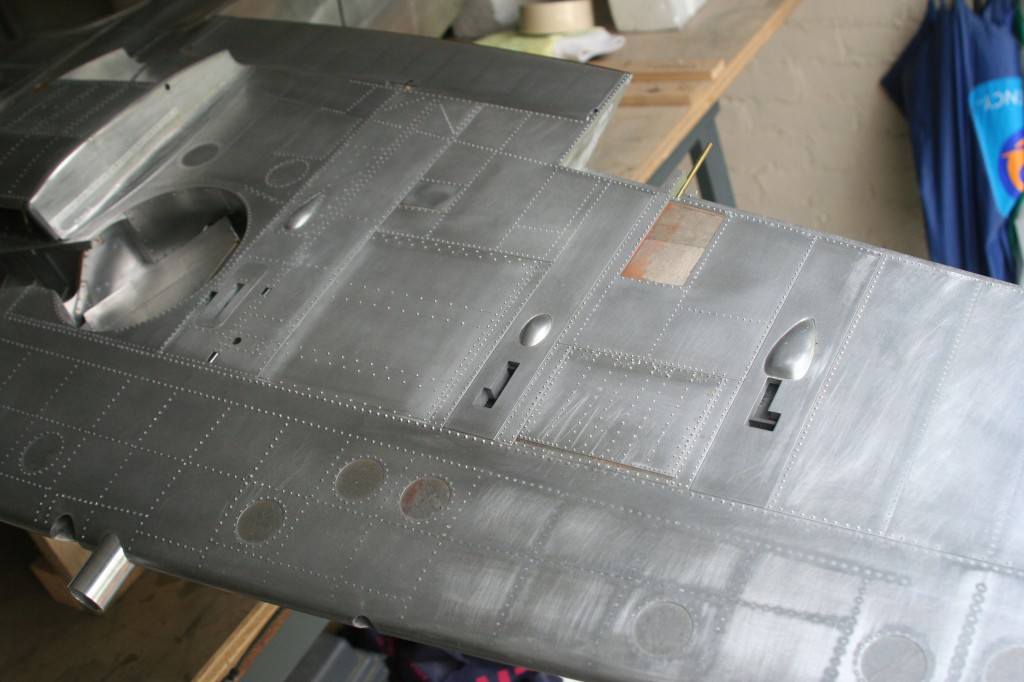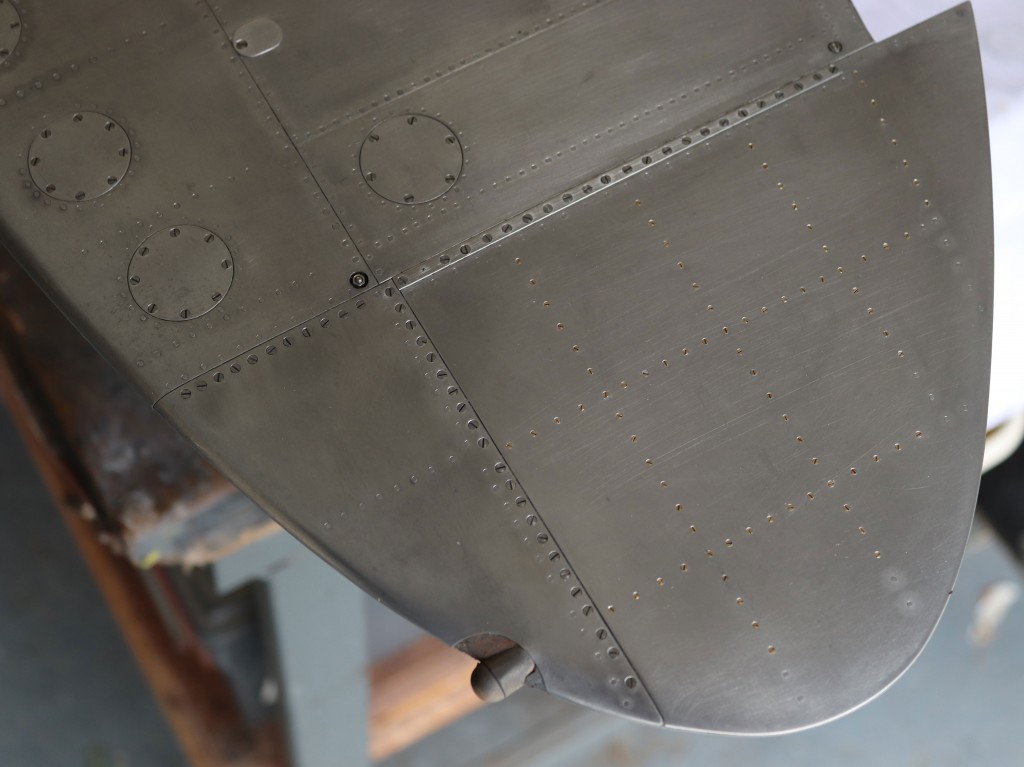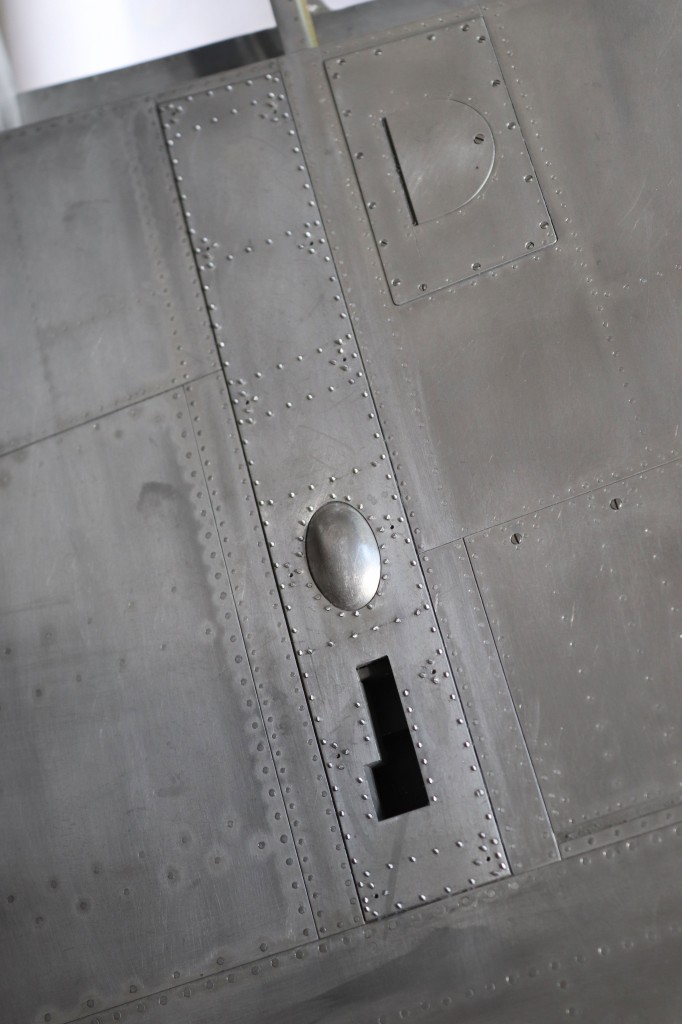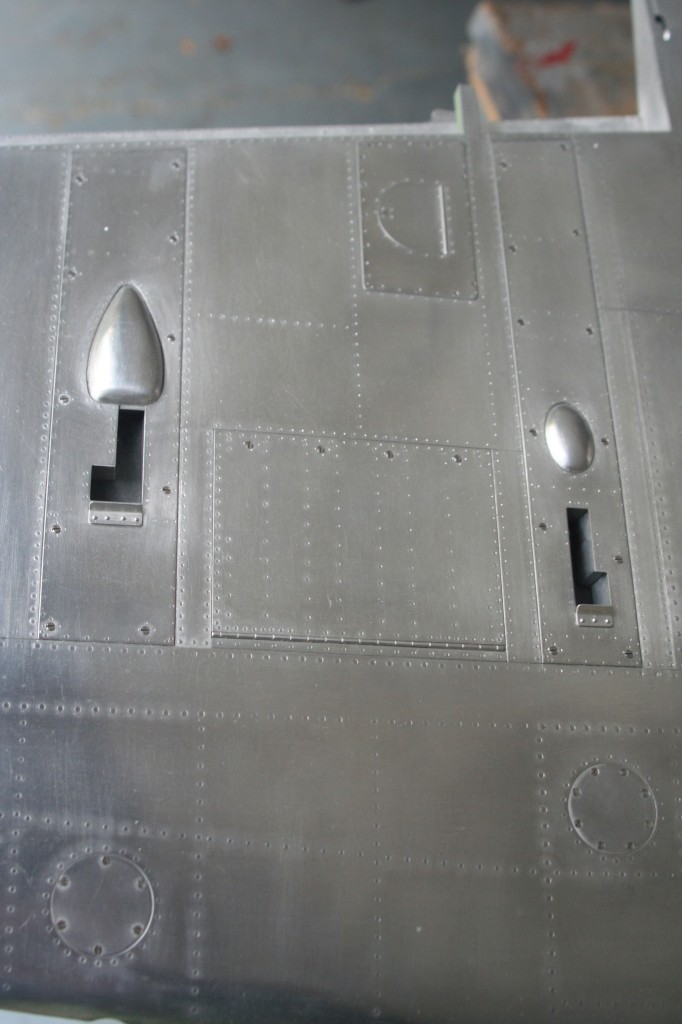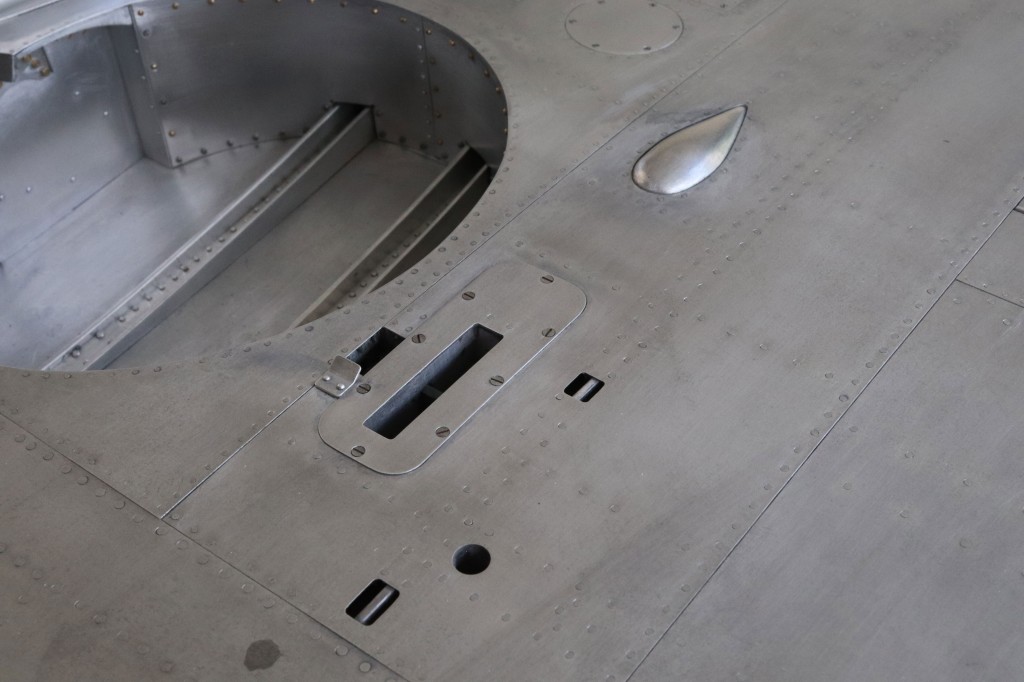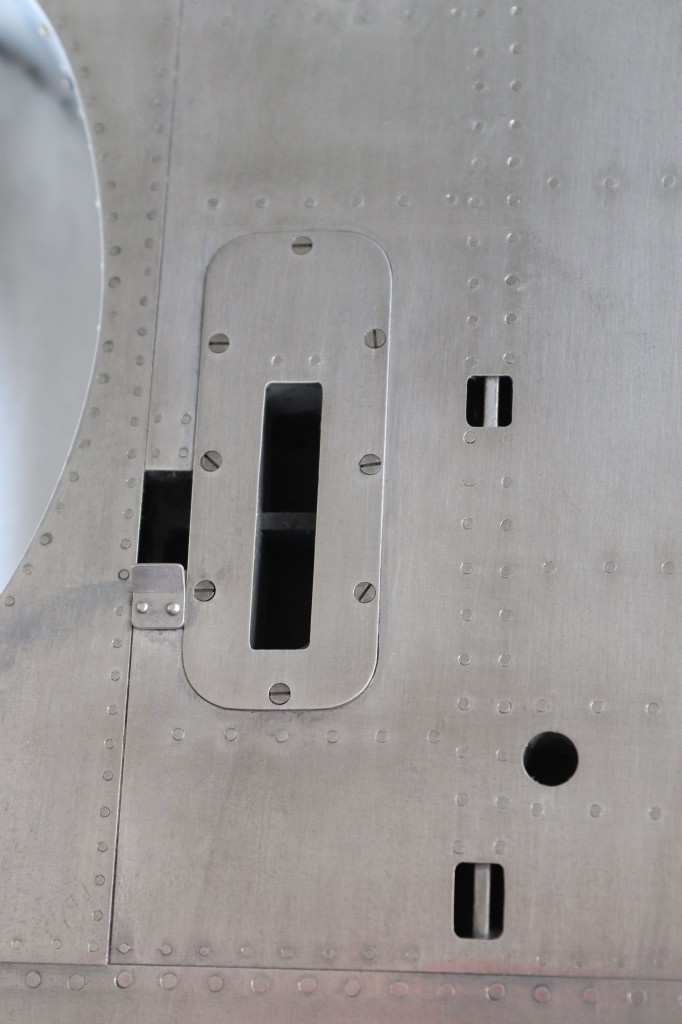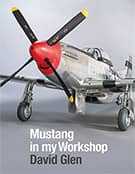A milestone – the wings completed!
Saturday, 28th April, 2018
After a tentative return to the fray in chilly early April (described in my previous blog), I threw myself wholeheartedly back into the work, such that by the end of the month I could justly claim to have achieved a milestone in the build: the completion of all riveting and skin detail relating to the underside of the starboard wing, and thereby the completion of the entire mainplane.
The work, which took well over a week, began with the emplacement of 140 or so tiny 14BA and 10 BA screws in the starboard wing tip section. It then proceeded along the leading edge with the cutting, drilling and fitting of the nine circular inspection covers, each with their complement of eight screw fasteners apiece. Various circular and rectangular doors and covers in the main body of the wing followed, some requiring tiny hinges, which I made from alloy wire straightened and scored at appropriate intervals.
The bulk of the work, however, involved the rubbing down flush of several thousand rivets emplaced but unfinished across most of the underwing surface during the previous autumn; this was complimented by the addition of three or four hundred additional rivets needed to complete the removable gun covers and other as yet unfinished areas of skin. I do not pretend to enjoy this aspect of the work: It is a laborious and filthy process during which the hands become permanently blackened by a noxious mix of fine aluminium and abrasive powder – and the lungs too, unless a mask is worn!
That done, yet more of 10 BA screw fasteners were required to complete the gun bay covers. I take great pains with these ubiquitous fasteners, because the quality of the countersinking in thin metal is make or break for the model. I have experimented with (and written about) alternative ways to do this over the course of my modelling career, and settled on what I now think is the optimum: The holes at depth are drilled a generous clearance size for the screw thread; but at the surface, and instead of being countersunk, the holes are drilled through exactly to the screw head diameter. To prevent possible disfigurement of the delicate metal locally these final holes have to be opened up in two or even three stages, then rubbed down gently to remove any tiny burs. The screws are left as long as practicable and each one is anointed on its thread end with a tiny blob of thickish CA glue, then emplaced in its hole and gently tamped down exactly flush with the metal surface with the help of a scrap of flat litho-plate. If this sounds like a lengthy process, it is, but the important thing is that it works. The job looks engineered because all the steel screw heads present at exactly the same angle and, as a result, they catch the light equally, which they do not do with even the slightest misalignment. If this all sounds a little too ‘precious’, compare with a row of closely but poorly emplaced screws and note the difference – I say again, the making or marring of the model!
The final touches – the tiny air deflectors ahead of the open shell ports – were a joy to do because they marked the end of a massive task to skin and finish the mainplanes, a task encompassing several years from beginning to end. The wings are now finished, but I have yet to complete and fit the radiator and oil cooler blocks and their twin fairings, which is the subject of my next blog.
